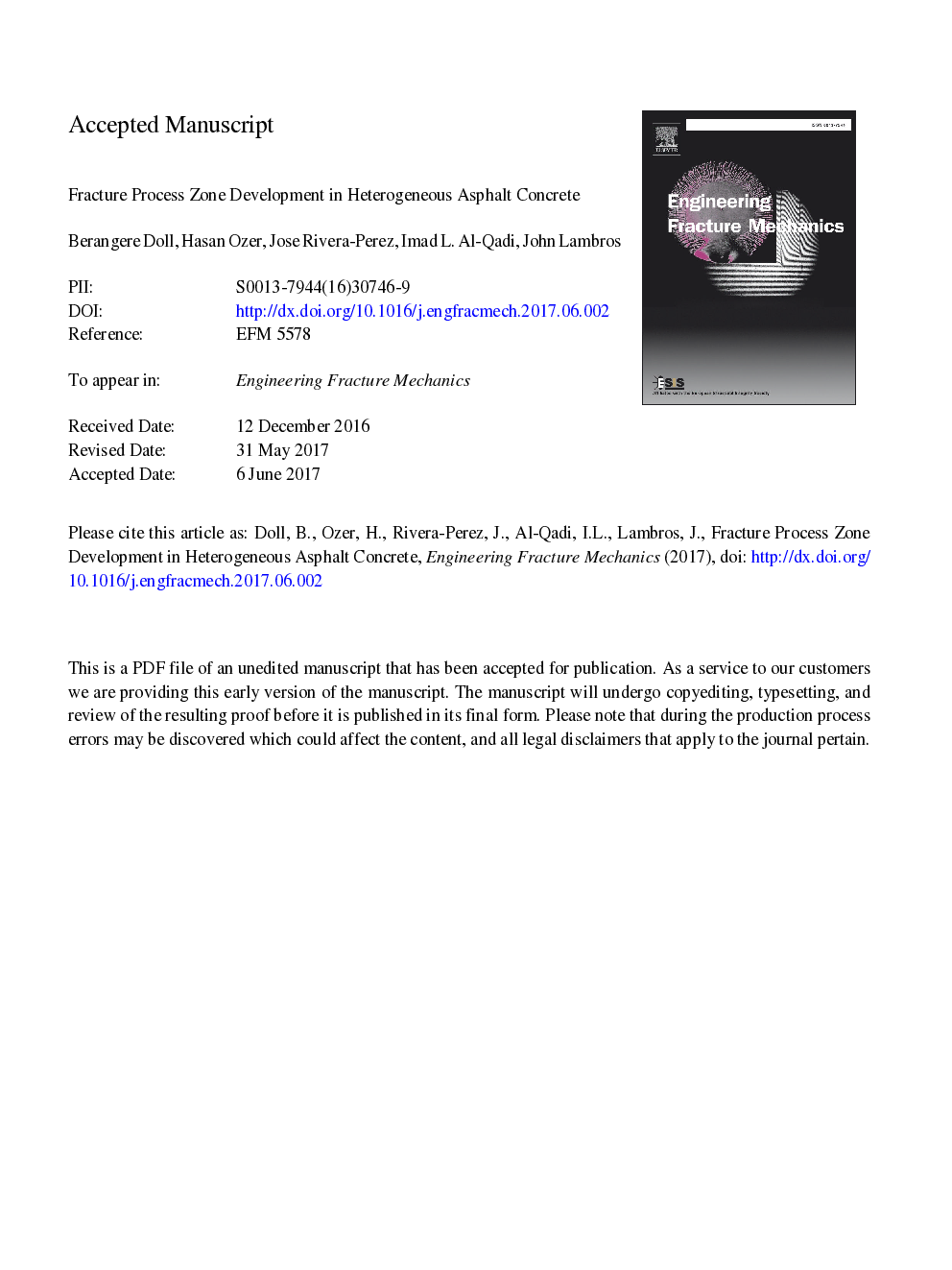| Article ID | Journal | Published Year | Pages | File Type |
|---|---|---|---|---|
| 5013813 | Engineering Fracture Mechanics | 2017 | 42 Pages |
Abstract
Measurements of the in-plane strain field around a notch tip were performed using digital image correlation (DIC) to provide an estimate of the Fracture Process Zone (FPZ) developing in a pre-notched asphalt concrete semi-circular bend sample under three-point bending. A magnification of 8 µm/pixel was used in the DIC optical set up in order to be able to resolve strains separately in the aggregate particles and in the asphalt matrix regions between particles. A highly inhomogeneous strain field resulting from the composite nature of the asphalt concrete was seen. Aggregate particles were observed to have almost no strain at all in any of the cases investigated herein (temperatures of â12 °C and 25 °C and loading rates between 0.07 mm/min and 50 mm/min), while significant strains developed in the viscous asphalt binder in the vicinity of the notch tip. Estimation of the FPZ size was done using two possible proposed methods: one involving a threshold strain value and one involving the change of correlation coefficient used in the DIC minimization process. Results from both approaches were used to rank the size of the estimated FPZ as influenced by a number of variables, namely, asphalt recycled content, temperature, and applied displacement rate. The results indicate that the damage zones develop primarily between the aggregates and an increase in loading rate or recycled content has a similar effect as a reduction in temperature: more localized strains/damage and a reduction in the apparent FPZ size. Finally, it was observed that the smaller the extent of the FPZ the less tortuous the crack path becomes.
Related Topics
Physical Sciences and Engineering
Engineering
Mechanical Engineering
Authors
Berangere Doll, Hasan Ozer, Jose Rivera-Perez, Imad L. Al-Qadi, John Lambros,
